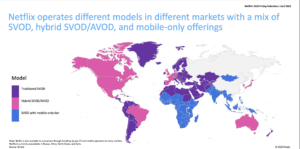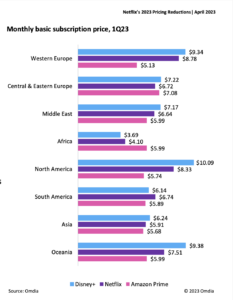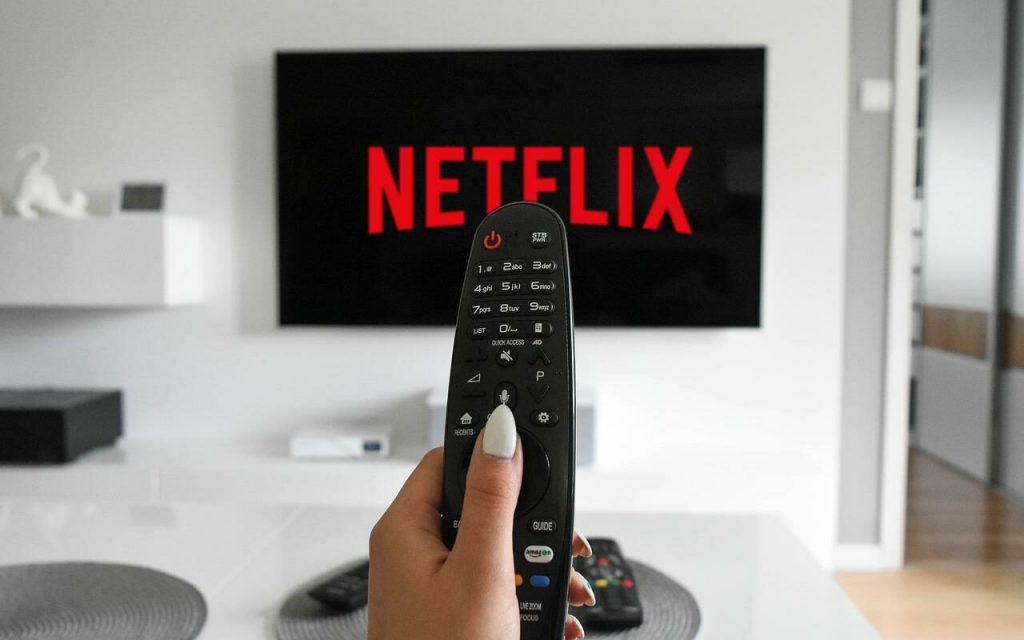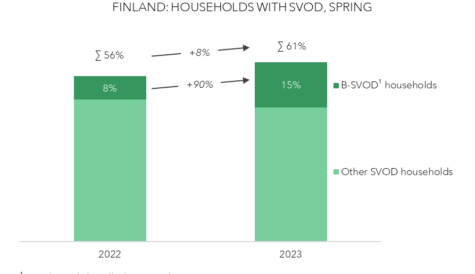
After more than 40 years of operation, DTVE is closing its doors and our website will no longer be updated daily. Thank you for all of your support.
DTVE Data Weekly: How Netflix is growing its developing markets
With increasing numbers of consumers cutting their SVOD subscriptions, Netflix has put into force new strategies to boost its numbers and grow its revenue, including the launch of cheaper plans in multiple regions. The streamer decreased its subscription prices across multiple countries.
It comes as streamer reported in its latest Q1 results that North America subs rose by 100,000, while Europe saw growth of 640,000 and a further 1.5 million were added in MENA and APAC combined. Lat Am subs were down 450,000.
In an earnings call, Netflix’s chief financial officer, Spencer Adam Neumann explained that the adjustments mark a “next step in our evolution of a bit of a better market fit, product market fit, pricing fit, with the aim of growing our penetration in these markets and also better medium and long-term revenue. So better for our members, better for our business.”
A new report by DTVE’s sister research outfit Omdia casts light on Netflix’s strategic decision to substantially cut prices for its subscriptions plans in smaller markets, most evident where billing took place in non-local currencies or where local currencies had fallen considerably against the US dollar in the past year.
In Kenya, for example Netflix’s Basic plan was cut by KES400 (US$2.93). While its Standard plan was reduced from KES1,100 to KES700 and its premium plan dropped from KES1,450 to KESS1,100.
The global streamer has not yet fully localised its service in smaller markets by billing in local currencies. According to Omdia, this is because Netflix has been a niche service in many of these smaller markets, and with uncompetitive pricing, its service was limited to wealthier audiences. Omdia outlines that the streamer’s lack of localisation has likely hampered Netflix’s growth in these markets with subscription numbers remaining low in those developing markets.
Billed in dollars
With Netflix offering its service in local currency in little more than 10 regions, customers in Netflix’s smaller markets are billed in US dollars, so their prices have effectively risen over time with the strong USD. As of result this has seen the largest pricing cuts across African markets with slightly smaller cuts in European and Middle Eastern markets. Its mobile-only plans, introduced in markets with low fixed-line broadband penetration, including several markets across Africa and some in Asia, saw prices drop by 25%-33%.
African markets billed in USD went to $2.99 per month; in Asian markets such as Mongolia or Laos prices were set at $3.99 per month for the mobile-only tier. Meanwhile, in Iraq, a standard subscription costs $3.99; in neighbouring Kuwait it costs $8.20, and the $3.99 price in Jamaica is less than half the $8.99 fee in the Bahamas.
Netflix’s pricing cuts sees it match closer to global competitors in the region, with Omdia noting South America the only region where Netflix is the most expensive service on average. However, Disney+ and Amazon have not rolled out to all territories globally yet.
Omdia points to examples such as Serbia, Bulgaria, and Romania, where Netflix subscriptions are billed in euros rather than the local currency, and where prices are substantially lower than Amazon Prime and Disney+.
Local content
While Netflix aims to grow in developing markets, Omdia notes the investment in local content plays a key factor as well as just pricing. The report points to the lack of content specific to North Africa, sub-Saharan Africa, and South-Eastern Asia, in comparison to the wealth of culturally specific content in Europe or Eastern Asia.
Omdia says: “Content from other Arab countries will play well in North Africa, and that from South America will gain traction in Central America, but a content gap exists.”
Netflix is expected to invest $1.9 billion on local content in the Asia-Pacific region in 2023, which should deliver material gains in India, Indonesia, the Philippines and Thailand.
Netflix co-CEO and director Ted Sarandos said in Netlfix’s earning call: “Every one of our big content wins start as a local win. And then in success, they roll out and they get regional, then they reach as far, then they get global, and it’s huge success. And there’s no marginal cost to all that additional audience when we get it right. So by creating those stories that drive growth of the business in local territories, it provides content for the pool that people can fall in love with, and it’s just as likely that we can get a gigantic hit from anywhere in the world. That’s really the scale of our operating business.”



